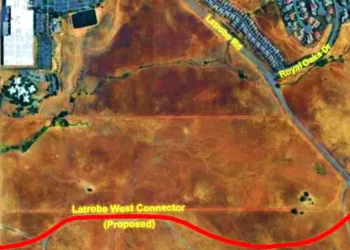El Dorado County (Jan 9, 2025) – In recent statements, Representative Kevin Kiley (R-CA) has accused California Governor Gavin Newsom of misrepresenting the state’s forest management efforts, particularly in the context of the devastating wildfires affecting regions like El Dorado County.
Kiley contends that the state’s leadership has failed to implement effective forest management strategies, thereby exacerbating wildfire risks. He argues that despite significant funding allocations, there has been insufficient progress in reducing hazardous fuels and improving forest resilience.
Governor Newsom, however, has highlighted substantial investments in wildfire prevention and response. In 2021, he signed a $15 billion climate change package, which included $1.5 billion dedicated to wildfire response and forest resilience. Additionally, the state’s firefighting force has been expanded to approximately 12,000 personnel, with increased budgets for Cal Fire and the introduction of advanced technologies to combat wildfires.
Critics, including Kiley, assert that these measures have not been effectively implemented, pointing to ongoing catastrophic wildfires as evidence of systemic failures in forest management. They call for a reassessment of current policies and more transparent reporting on the progress of forest treatment projects.
This debate underscores the complexities of wildfire management in California, where factors such as climate change, prolonged droughts, and historical land management practices contribute to the increasing frequency and intensity of wildfires.
As El Dorado County residents continue to face the threat of wildfires, the discourse between state officials and lawmakers like Representative Kiley highlights the pressing need for effective and transparent forest management strategies.
In a controversial move, Los Angeles Mayor Karen Bass implemented a $17 million reduction to the Los Angeles Fire Department (LAFD) budget. The decision has sparked significant debate, especially in the wake of heightened wildfire risks and recent catastrophic fires in the region. Critics argue that the budget cut undermines the city’s emergency preparedness, as it impacts LAFD’s ability to train, staff, and equip itself adequately for large-scale disasters. Supporters of the decision have yet to provide detailed justifications, leaving many residents concerned about the city’s priorities and its capacity to protect lives and property in times of crisis.
This situation raises important questions about the allocation of resources and the effectiveness of current wildfire prevention and response strategies in California. Residents of El Dorado County and other wildfire-prone areas may wonder whether sufficient measures are being taken to protect their communities.
What are your thoughts on the state’s current approach to forest management and wildfire prevention? Do you believe that the measures implemented are sufficient, or is there a need for a reassessment of policies and resource allocation? Share your perspectives in the comments below.












